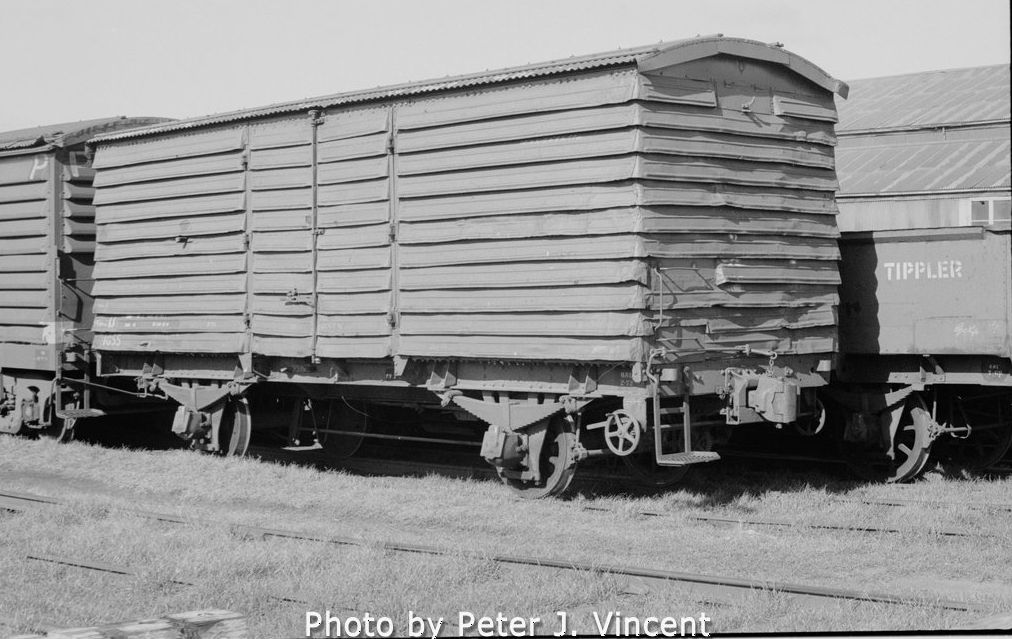

Construction for this group spans 1888 to 1958. The number group was 1 to 1796 with many designs. The photo represents a group built in the late 1900's on six wheels. The six wheeler group were converted to four wheels with larger axleboxes at the same time the underframe was strengthened for auto-coupling in the 1933/34 period.
At the same time, sixty U vans were converted to auto-couplers and fitted with bogies. These vans became the _UB_ class.
U vans were used for perishable traffic. The louvres along the sides and ends providing ventilation.
From 1925, some of the vans earned extra revenue by being painted with company advertising.
U vans were scrapped as more bogie louvre vans were built with numbers progressively scrapped towards the late 1970's. Many had bodies removed and sold with the underframes being converted to KAB_ and KMQ_ wagons.
End trap doors: Vans built to about 1925 feature one trap door at one end underneath the roof outline. The tap door was for the insertion of longitudinal bars used to hang meat from. Vans built from 1925 were fitted with two trap doors, one at each end. With the maintenance of end bodywork from the 1960's, the trap doors were welded shut or replaced by a single louvre piece that removed the trap altogether.
In the mid 1920's, a lot of fruit was carried from the fruit growing areas to Melbourne for shipment. There was concern the vans were too hot in summer months. Some flat sheet roofed vans were given a second corrugated roof, no doubt to test for cooler operation. Nothing appears to have come of the tests. By the 1970's only about 3 vans were in service with the unusual double roof.
In the late 1950's the railways experimented by placing several sets of roller bearing axles under U vans. As more and more bogie rolling stock was being built it was felt that further fixed wheel tests were inappropriate. Nothing more came of the tests.
Most unusual van probably goes to U 961, basically a 'VLX on four wheels'. The body was chopped in 1963 and replaced by unique design ends, VLX_ louvred sides with _B__ van steel sliding doors. The author discovered that this was a design for an experimental explosives van; unusual as most explosive carrying vehicles are boxvans.